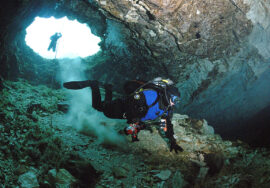Florida Hurricanes: 1900s to Present
The Sunshine State has faced the wrath of numerous devastating hurricanes throughout history. From the destructive Great Miami Hurricane of 1926 to more recent catastrophic impacts of Hurricane Michael and Hurricane Ian, Florida’s resilience has been tested time and time again. Let’s embark on a journey through time, tracing the path of significant hurricanes that have shaped Florida’s landscape and left lasting imprints on its communities from early 1900s to the present day.
- The Great Miami Hurricane (1926): One of the most devastating hurricanes in Florida’s history, the Great Miami Hurricane struck on September 18, 1926. With estimated winds of 145 mph, the Cat 4 storm caused widespread destruction as it barreled through Miami and surrounding areas. The storm surge, estimated at 10 to 15 feet, inundated coastal communities, claiming hundreds of lives and causing extensive property damage.
- The Okeechobee Hurricane (1928): Making landfall in Palm Beach County on September 6, 1928, this Cat4 hurricane carried winds of up to 145 mph along with a 20-foot storm surge. The significant flooding in the surrounding area caused a dike system failure, leading to the flooding of Lake Okeechobee. Migrant workers living in shacks suffered a blowing defeat with an estimated 2,500 casualties, making this the second most deadliest hurricane in U.S. history.
- The Labor Day Hurricane (1935): The Labor Day Hurricane of 1935 stands as the most intense hurricane ever to make landfall in the United States. Striking the Florida Keys with winds exceeding 185 mph, this Cat 5 storm obliterated structures and caused significant loss of life. The hurricane’s impact was catastrophic, particularly on the railroad camps established for the Florida Overseas Railroad, resulting in one of the highest death tolls in U.S. hurricane history.
- Hurricane Donna (1960): Donna was one of the most notable hurricanes in Florida’s history. Hurricane Donna made landfall in the Florida Keys as a Cat 4 storm. With its destructive force, Donna ravaged the entire peninsula, leaving a trail of destruction and claiming dozens of lives. This hurricane served as a catalyst to build stronger infrastructure and led to the formation of the Southwest Florida Water Management District.
- Hurricane Andrew (1992): A name etched in the memories of Floridians, Hurricane Andrew made landfall on August 24, 1992, near Homestead as a Cat 5 storm. With wind speeds surpassing 165 mph, Andrew caused extensive damage, leveling entire neighborhoods and leaving more than a quarter of a million people homeless. The storm’s estimated $25 billion in damages prompted significant changes in building codes and hurricane preparedness across the state.
- Hurricane Charley (2004): In 2004, Hurricane Charley struck Florida’s southwestern coast, making landfall near Punta Gorda as a Cat 4 storm. The rapid intensification of Charley caught many off guard, resulting in insufficient time for evacuation. The storm caused widespread devastation, destroying homes, businesses, and infrastructure across the region. Charley served as a stark reminder of the unpredictable nature of hurricanes and the need for constant vigilance.
- Hurricane Irma (2017): One of the most powerful hurricanes on record in the Atlantic basin, Hurricane Irma made landfall in the Florida Keys very late on September 10, 2017, as a Cat 4 storm. With its massive size and sustained winds of 185 mph, Irma ravaged the state, unleashing destructive storm surges, flooding, and widespread power outages. The impacts were felt across Florida, from the Keys to the northeastern coast, causing significant damage and disruption.
- Hurricane Michael (2018): In October 2018, Hurricane Michael made landfall near Mexico Beach in the Florida Panhandle as a Cat 5 storm. With wind speeds exceeding 160 mph, Michael was the strongest hurricane to strike the region. The storm surge and destructive winds left a trail of devastation, flattening communities, uprooting trees, and causing extensive power outages. The unprecedented intensity of Hurricane Michael highlighted the vulnerability of coastal areas to rapidly intensifying storms.
- Hurricane Ian (2022): In what would become the third-deadliest weather disaster on record, Hurricane Ian tore a destructive path stretching more than 140 miles through Florida. The Cat 5 hurricane turned the Fort Myers coastline to rubble with a 18 foot storm surge and winds exceeding 160 mph. Sanibel Island was entrenched with a 4-6 foot surge, and flooding devastated inland areas as far up as Orlando. Hurricane Ian was the third-costliest tropical cyclone on record and the costliest in Florida history at $116B.
Florida’s history with hurricanes is a testament to the state’s resilience and the challenges faced by its communities. As the frequency and intensity of hurricanes confronts our need for development, it becomes increasingly crucial for residents and authorities to prioritize preparedness, mitigation, and effective response. By learning from the past and embracing advances in forecasting and infrastructure, Florida can continue to evolve and adapt to the ever-present threat of hurricanes, safeguarding lives and protecting its vibrant coastal communities.








